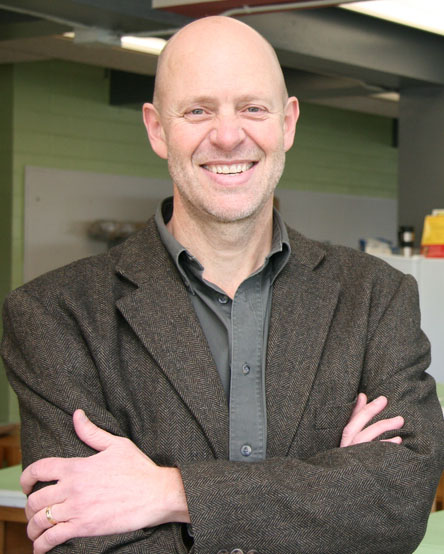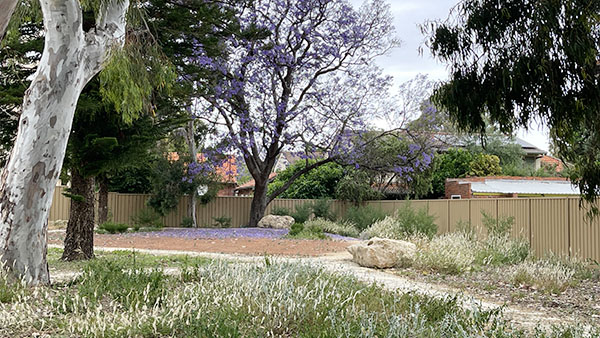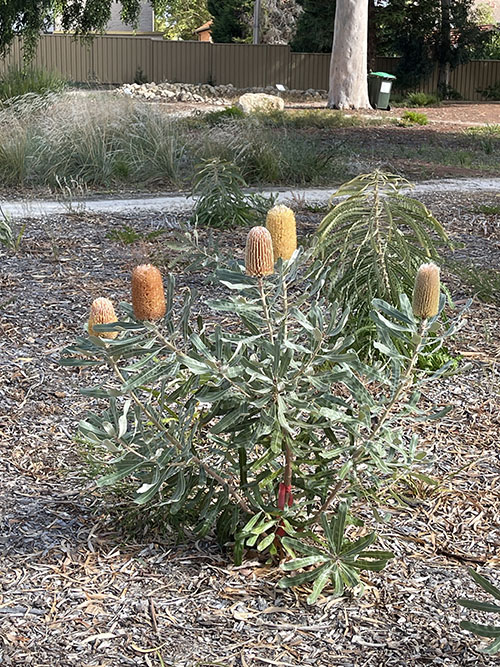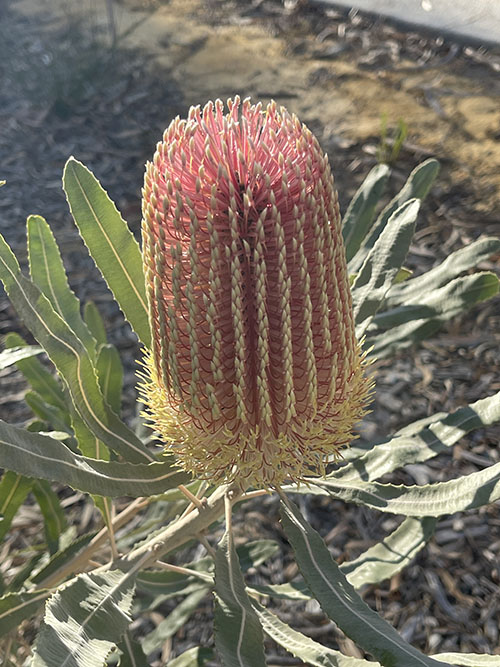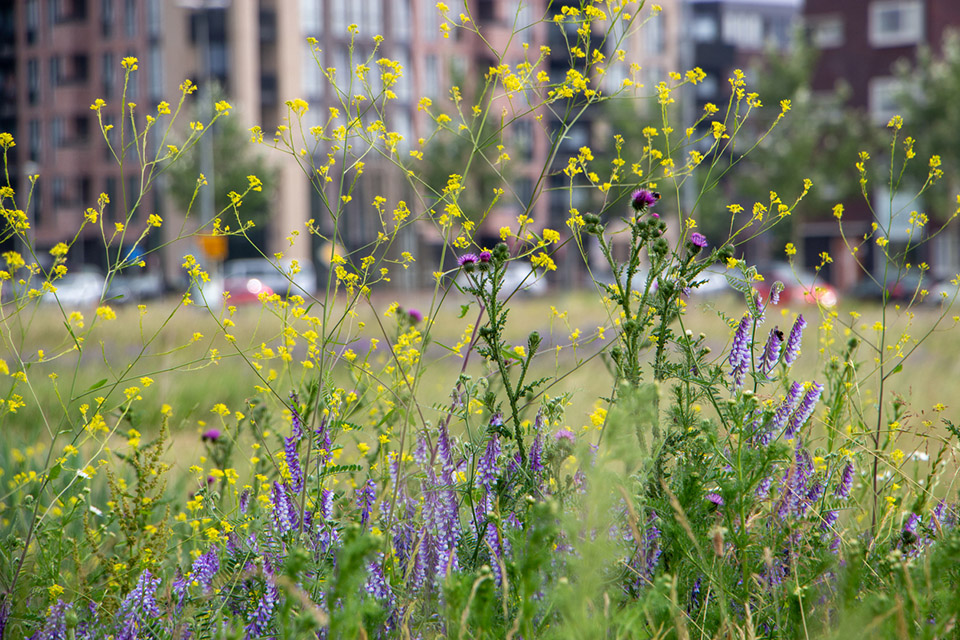Creating cool islands in the city – how microclimates and urban greenery can reduce the dangers of heat
Published 3 June, 2024
Trees, parks, and water bodies are vital to reducing heat for the health and well-being of city dwellers. Researchers Robert Brown, Johanna Deak Sjöman, and Maria Ignatieva share their perspectives on how we can tackle the heat in cities by designing cooling microclimates and green-blue infrastructures ‒ with examples from across the globe.
In a nutshell
- Designing cooling microclimates and blue and green spaces are powerful tools to mitigate heat in cities.
- A landscape perspective needs to be implemented during the whole urban development process for climate adaptation and heat mitigation.
- Heat and drought-tolerant plants and complex plant communities are essential in an urban environment in a warming climate.
- More cross-sectoral collaboration is needed in urban planning and management for win-win solutions
- Local demonstration projects can act as a tool for learning and spark inspiration for change
Climate adaptations in cities are of increasing importance as the world witnesses the dangerous health effects of climate change and warming climates. Designing microclimates and green-blue infrastructure to manage hot conditions in cities for well-being and health are important climate adaptation measures. Microclimates are small areas where the atmospheric conditions differ from surrounding areas. Green-blue infrastructures such as parks, lawns, and water channels, can help to create cooling microclimates.
Microclimate factors and how they interrelate to shape cooling environments
Microclimatological factors
In Texas, Robert Brown, Professor of Landscape Architecture and Urban Planning at Texas A&M University, studies how to design thermally comfortable microclimates for outdoor environments. His research group connects knowledge from micrometeorology, architecture, and urban planning and measures different microclimatological factors in urban environments, like air temperature, relative humidity, wind speed, solar radiation, and amount of heat emitted by surfaces, so-called longwave radiation.
Designing cooling microclimates – more than the air temperature
“When designing cooling microclimates we try to reduce the amount of solar radiation and the amount of longwave radiation while increasing the wind in our design. That can be achieved either through orientation, heights of buildings, the right tree, the right location, or different surface materials”, he explains.
He clarifies that Urban Heat Islands, which give hotter conditions in urban areas, do not necessarily mean that air temperature is different in cities compared to surrounding areas. What is different, is the total radiant temperature caused by the amount of sunshine that falls on people and surfaces. If the sunshine falls on hard surfaces like concrete or asphalt, they heat up and emit longwave radiation, similar to standing next to a heater.
Shading surfaces has a big effect
“Landscape architects can’t modify the air temperature or the humidity very much over short distances, but they can really have a big effect on the amount of solar radiation that falls on a person or on surfaces. By shading surfaces, like asphalt and concrete, we can keep them cooler so they don’t emit as much longwave radiation,” Robert Brown explains.
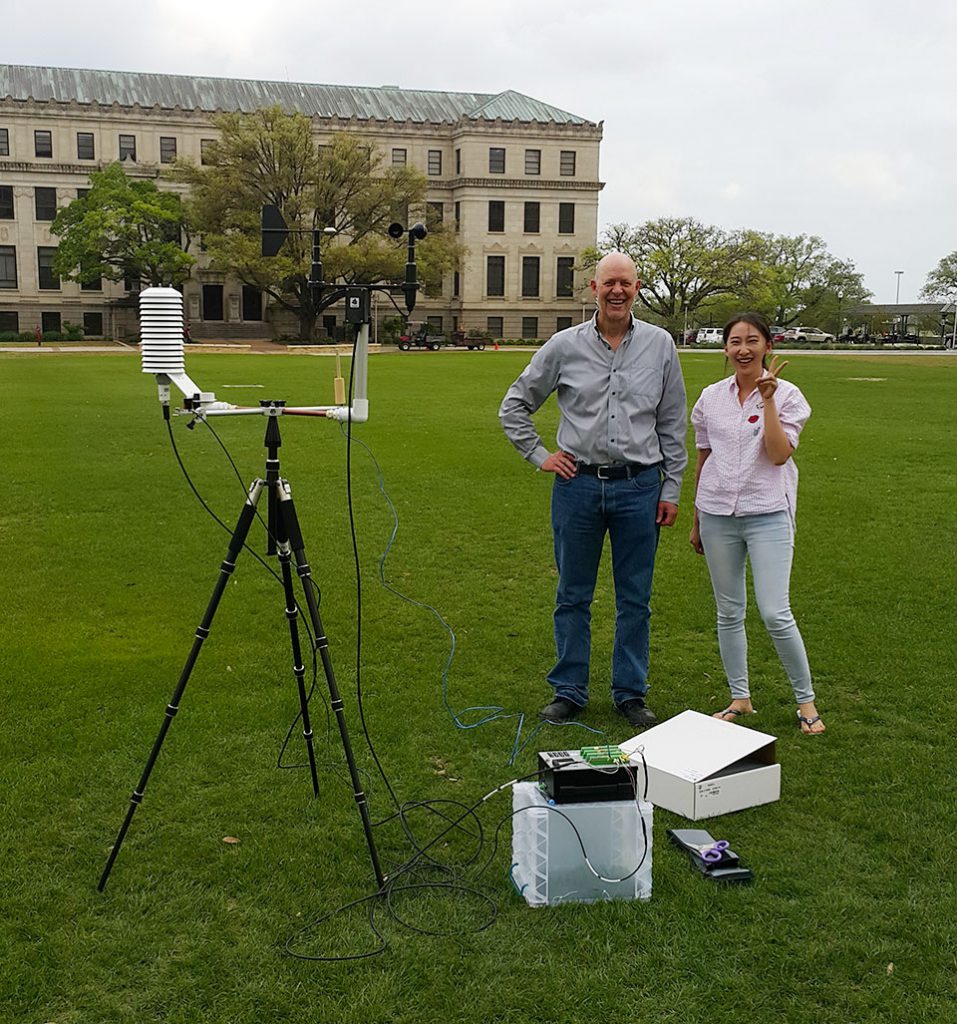
“Don’t block that wind”
Wind can be channelled into areas to cool them down, for instance by orienting streets in certain directions.
“In Texas, the prevailing wind direction is from the South or Southeast when it’s really hot. So we can make sure that we don’t block that wind,“ says Robert Brown. “And if we squeeze the sides of the street together, we can increase the speed of the wind as it moves down those streets.”
Avoid getting overheated
Robert Brown has developed a human energy budget model, where he investigates what part of the urban environment causes people to get overheated. Here, air temperature only plays a small part ‒ providing shade is crucial.
“If you shade people from the sun, have them stand beside a green wall or cool fountain with a bit of a breeze, you can bring their overheated situation down to being comfortable. We want to design the environment so that they’re in a microclimate that will make them feel cooler and it’s less dangerous for them,” Robert Brown says.
Blue and green together
Another important feature for cooling microclimates in cities is water.
“For a long time, people thought that by having a lake or pond it would cool the area around it, but now we know that water by itself has a very small effect on the air temperature and may even help to keep the air around an area warmer. But having said that, when we combine water with vegetation, like a pond or lake with trees around it, it has a measurable cooling effect. We need to have the greenery and water together.”
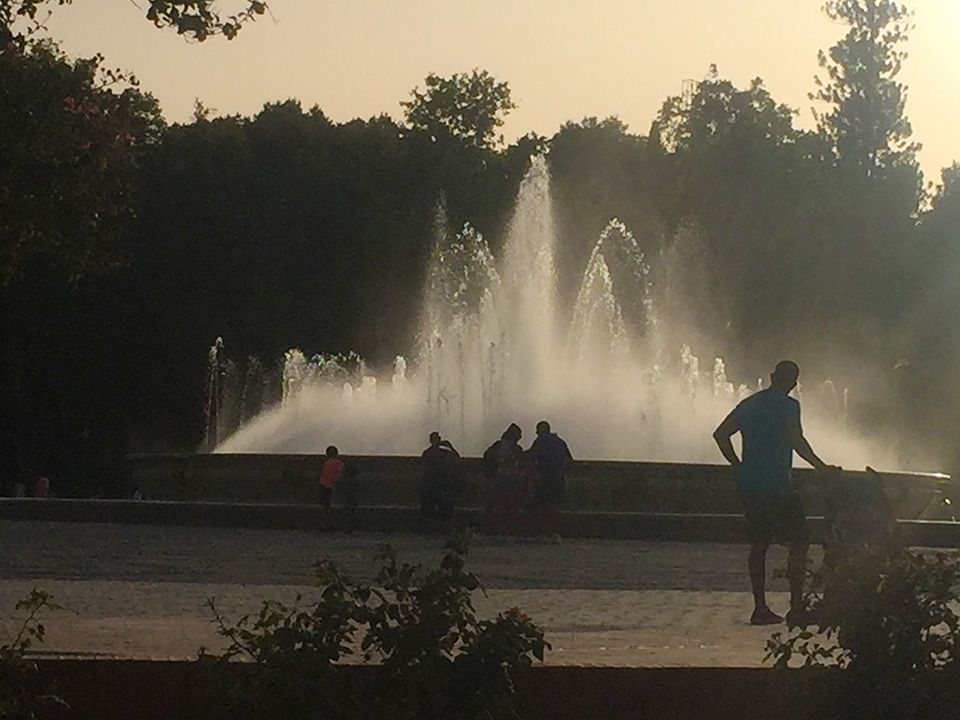
Trees are crucial in reducing heat-related deaths
Vegetation will also transpire water and create cool surfaces through shading so there will be less longwave radiation emitted. There are also health benefits of increasing tree coverage in cities. A study in Toronto, Canada showed that heat-related ambulance calls were negatively correlated to canopy cover and that heat-related morbidity was reduced by 80 percent as tree canopy cover increased beyond 5 percent. Another study of 93 European cities estimated that more than 2600 premature heat-related deaths could be prevented each summer if tree coverage were to increase to 30 percent, according to estimates in a study published in The Lancet.
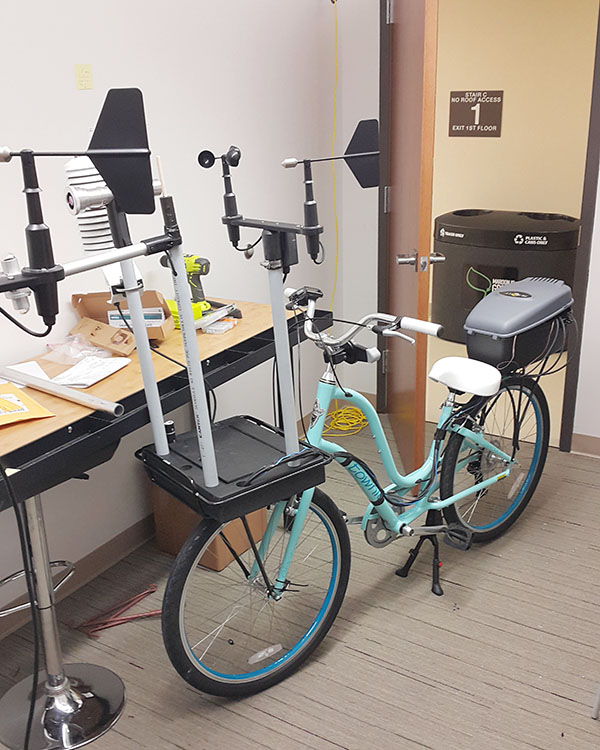
We already know that heatwaves cause more deaths than all other natural disasters put together. People will wake up and realize that we really need to design our urban environments to be cool islands rather than heat islands ‒ and we know how to do that.”
– Robert Brown
Right vegetation needs space and care above and below ground
Trees can deliver microclimate benefits all year round
In Sweden, Johanna Deak Sjöman, researcher and teacher at the Swedish University of Agricultural Sciences, studies how trees can be used to regulate the microclimate in urban neighbourhoods. She worked with the Lomma Harbour follow-up in Southern Sweden using the climate modelling programme of ENVI-met showing how different tree species can regulate the wind in the winter and modify radiant temperatures in summer.
“Trees have been at the centre of my work. They deliver so many different ecosystem services in proportion to the space they occupy.”
Trees lowered experience of heat
Her studies show that trees can influence people’s thermal comfort during the warm season and increase their physical well-being by shading and mitigating longwave radiation.
“During a summer day with 21 degrees Celsius, even without a heatwave, people may experience a courtyard with a lawn and smaller fruit trees as 45 degrees, she exemplifies. While 20 meters away where there is a group of larger trees, the temperature is being experienced as less than 20 degrees”, Johanna Deak Sjöman explains.
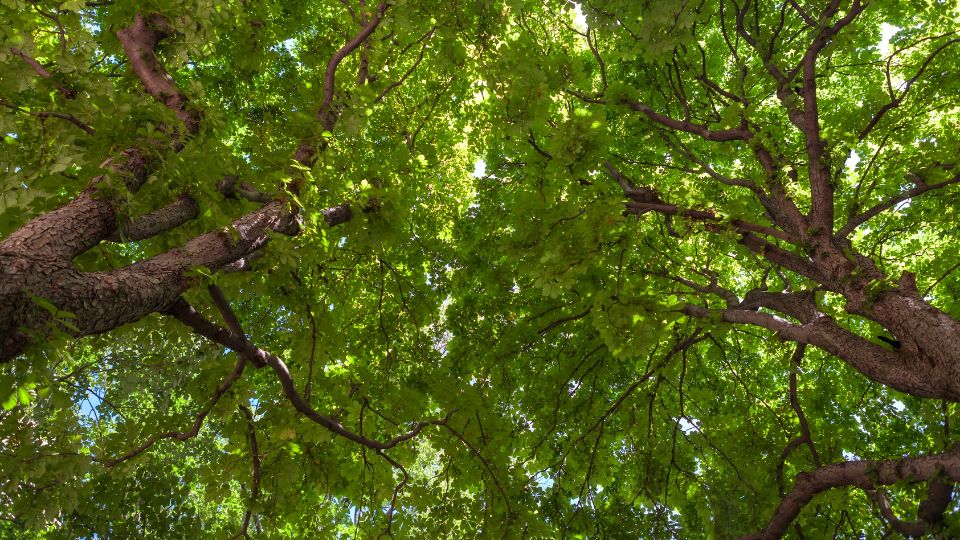
Complex interactions and challenges
The interactions between trees, other vegetation and built structures are complex and need to be tailored and planned differently in different areas. Another challenge is the fact that many places, such as Sweden, have a cold winter season to plan for in parallel to the hot summer season. Too little wind in summer can cause thermal discomfort, but too much wind in winter can also cause problems. Leaf and branch structures differ depending on tree species. It is important to understand these differences to plan and design good climate conditions. There is also a need to plan for different climate extremes, for instance both drought and flooding.
Another challenge in a warmer climate with more frequent heatwaves will not only be the health and well-being of people but also the health of trees, plants, and ecosystems. Sufficient plant beds that can retain soil moisture, selected plant material, and alternatives to traditional grass lawns can help build resilient urban green infrastructure.
We need to make space below ground
Trees and plants require space below ground, Johanna Deak Sjöman points out.
”With limited space in city centres, the days are gone when we could plan for large parks inside our cities. Instead, we need to make more space for root development and plant beds below ground, for trees to develop and live for decades to come. This can only be achieved through cross-sectoral collaboration, from early planning between utility and park departments to long-term maintenance work.”
Meadows as biodiverse and heat-resistant alternative lawns
In Australia, Maria Ignatieva is a professor of landscape architecture at the School of Design at the University of Western Australia in Perth. She has a background from the Department of Urban and Rural Development at the Swedish University of Agricultural Sciences, where she studied alternative lawns. Her research focused on alternative meadows at the Campus in Uppsala, a research topic that she has continued to study in an Australian context.
“I live in a hotspot of biodiversity in the Southwestern part of Australia, with a climate with high temperatures, heatwaves and an increasing number of days with high temperatures”, Maria Ignatieva says.
“Extreme weather has made irrigation essential”
Brownish lawns are a common sight in hot summers. In Western Australia, all lawn grasses are not native and need irrigation to be green. In a hot climate, it is essential to plan smart irrigation schemes for plants to survive, she points out.
“Usually native plants in green spaces need to be irrigated only after planting in the garden for two summers. After that, natives can survive without irrigation. But now, the weather is much more extreme, hotter and drier. Here in Western Australia, irrigation of urban plants is now essential even two years after planting,” says Maria Ignatieva.
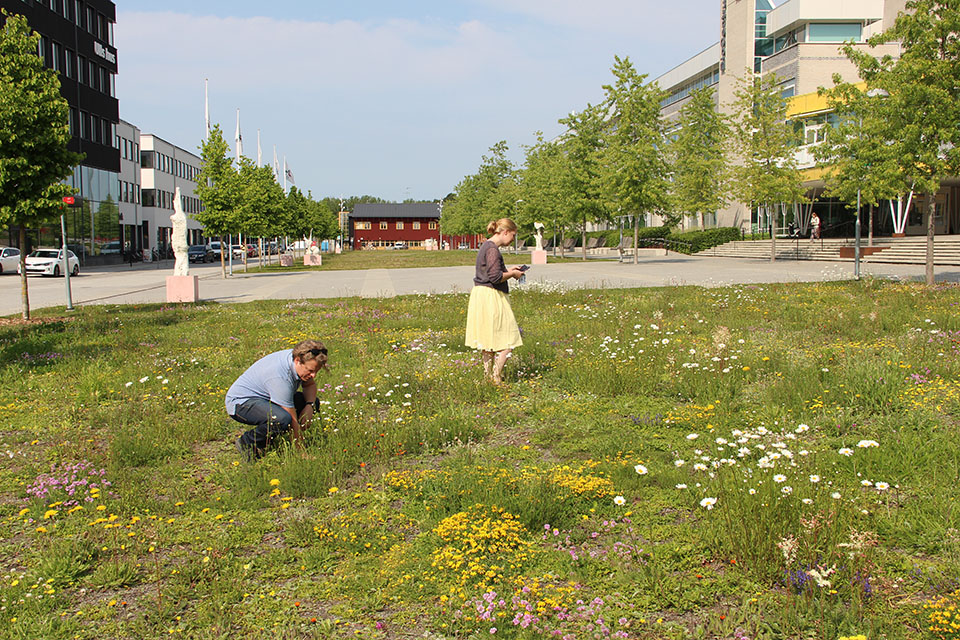
Drought-resistant meadows
Turning lawns into meadows is one way of designing more drought-resistant and biodiverse vegetation and green spaces in European cities.
“It is very easy to do this, you just stop mowing very frequently to turn your lawn slowly, but surely to a more biodiverse environment,” she says.
Need for heat-resistant plants
“What species of heat-resistant plants you should use, depends on where in the world you are, Maria Ignatieva concludes.
In Perth, many native species are drought-tolerant due to the climate and native biomes they came from, such as dry Mediterranean woodlands and shrublands.
“However, many of the native trees are not doing well as street plantings, because they are very ancient and have not experienced human-induced disturbances. Plane trees, Platanus spp., is one species that can tolerate high temperatures and is quite drought tolerant. There are also different species of Eucalypts from eastern states of Australia which are commonly used for street plantings,” Maria Ignatieva says.
Other important aspects are to create a diverse and complex plant community, for instance with a shrub or ground cover layer, to keep water in the soil, combined with structural soils or mulching.
“Keep the native remnants of nature”
Urban biodiversity can play an important role when creating a resilient design that can withstand different weather conditions. Maria Ignatieva argues that in Australia where native ecosystems are very ancient and particularly vulnerable to anthropogenic pressure, we need to keep, restore, and return native vegetation in the cities to create complex plant communities that can better adapt to patterns of extreme events like variation of temperatures of precipitation and outbreaks of pests and diseases.
“The main message for Australian cities should be to keep as much as possible of the “native nature”.
Knowledge co-creation across sectors and disciplines
Involve a landscape perspective in the whole planning process
In Sweden, Johanna Deak Sjöman reflects on the challenges in working with microclimates and green infrastructure in cities. Her interest in this research field initially grew from frustration that landscape architects and planners working with green infrastructure, trees, and vegetation, often come in too late in projects, merely given the task of designing the “left-over spaces”.
“I was interested in how we can communicate the technical functions and regulating ecosystem services of trees to professionals in other fields, such as building engineers, architects, politicians, and administrations. We also need to include these functions at an earlier stage in the design and planning process than we do today,” she says.
Need for place-specific knowledge and practice-near communication
Even though climate adaptation is high on the agenda for many researchers and practitioners, landscape architects, and urban planners, there is still a need for more place-specific knowledge and expertise in climatology, according to Johanna Deak Sjöman.
Studies in Sweden and internationally show that the field of climatology is often seen as too complex and scientific for practitioners to use on a day-to-day basis. Previous research shows that knowledge of climatology, as well as the link between climatology and urban planning, is relatively poor amongst urban planners. A study from 2000 by Ingegärd Eliasson (The use of climate knowledge in urban planning – ScienceDirect) at Gothenburg University showed that urban planner’s knowledge of climate issues had a low impact on the planning process. A recent international study from 2020 (Awareness of urban climate adaptation strategies –an international overview – ScienceDirect) showed a lack of awareness about climate adaptation in cities. It also suggested that urban climate experts need to communicate in a language that is more familiar to practitioners within urban design and architecture.
The link between climatology and urban planning is however complex and difficult to apply and as Robert Brown writes in his book Design with Microclimate: “It might be a combination of the topic’s complexity, a lack of demand from clients and the public, and the fact that most things about microclimates are essentially invisible.”
“Perhaps, the answer lies in finding a common language between researchers and practitioners”, says Johanna Deak Sjöman.
Need for cross-sectoral collaboration and knowledge co-creation
Johanna Deak Sjöman argues that we can only achieve robust climate adaptation of urban landscapes if different sectors start working together.
“There is a need for more cross-sectoral collaboration and I think it should start both in educational programmes and among practitioners, where students of landscape architecture, architecture, civil engineering, water engineering, and other relevant sectors can learn early on how to build solid partnerships,” she argues.
“It is not only sectoral silos that limit successful climate adaptation, but also the way that physical space in cities is often treated in silos, where stormwater measures and mitigation to heat is treated separately, “ says Johanna Deak Sjöman.
Teaching about new methods
Education about new methods is important as well as how to manage more complex systems.
“When new neighborhoods are built they sweep away all the trees, and it becomes very hot areas with big open hard surfaces,” Maria Ignatieva says. People need to understand the ecosystem services of a biodiverse lawn that you cut only twice a year, instead of thinking it looks messy and complaining. They need to understand why we use more natural plants than traditional flower beds.”
Need for spatial demonstration projects to learn for change
Adapting to different weather extremes in the same space
“A very difficult problem is how to adapt cities to manage both extreme water flows and drought in the same space. These two weather extremes can’t be planned separately but need to be planned together enabling synergies. Cross-sectoral collaboration early in the planning phase will increase the possibilities to adapt our cities to climate change, even if space is limited”, says Johanna Deak Sjöman.
This is a central approach in the new research project Green4Extremes initiated by SMHI where SLU and Lund University participate together with the cities of Malmö and Norrköping. The project aims to evaluate how green infrastructure can mitigate flooding and heat stress in cities.
“We need to show people how to do it”
Maria Ignatieva agrees that green infrastructure planning should be integrated with other sectors, but also highlights the importance of including green space managers.
“In Sweden, we asked some of the green space managers if they are ready for alternative solutions. But the answer was “not really”, if there is a lawn they just cut it by routine, but a pond or a more complex system is much more expensive and complicated to manage. In my opinion, we need to show people how to do it, so people get inspired by their own yards and neighbourhoods,” says Maria Ignatieva.
Back in Texas, Robert Brown reflects on the challenges of designing cooling microclimates in urban environments. Even though there is a lot of knowledge on how to create cooling microclimates, one of the biggest challenges is that most cities are already built with a lot of concrete and asphalt, he says.
“We can’t easily change that. What we have to do is to go into these areas and provide more trees, green walls, and green roofs.”
Need for increased awareness
Robert Brown sees a need for increased awareness, which he believes will grow partly from witnessing the dangers of climate change.
“We already know that heatwaves cause more deaths than all other natural disasters put together. People will wake up and realize that we really need to design our urban environments to be cool islands rather than heat islands ‒ and we know how to do that.”
Starting with the local level
He also believes in beginning to work at the local level, with the thermal environment of a single individual or with a single patch to inspire change at a large scale for communities and neighbourhoods.
“If we can create a little patch of really comfortable microclimate in the city, other people will see that little patch and replicate it. As you start to add these little patches of cool in the city, cumulatively they will start to cool the neighbourhood, and the neighbourhoods will start to cool the city.”
He has worked on several new development projects in Manhattan in New York City to create as positive a microclimate around those new buildings as possible.
“Hopefully, we will start to see other buildings following that lead.”
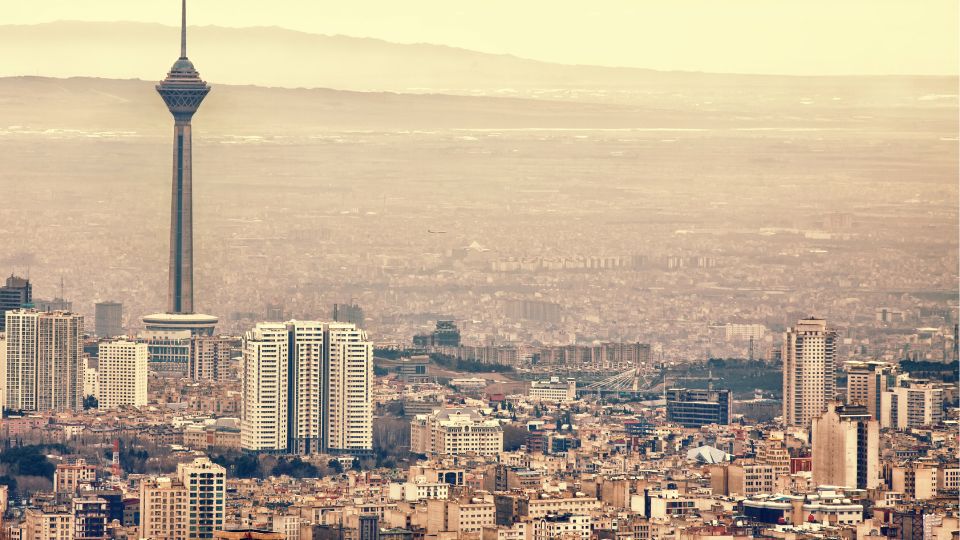
Vulnerable people will benefit the most
Robert Brown and his research group are now turning their focus on vulnerable people like the elderly, children, and people who live in disadvantaged neighbourhoods without green spaces and air-conditioners, and to people in the hottest countries like Iran and Pakistan.
“They are the people who are really going to benefit from designing cooling microclimates. The more we make people aware, the more we might have an impact.”
A landscape planning perspective on urban development can offer sustainable alternatives for the built environment that can mitigate, prevent, and protect people from the risks of heatwaves, related not only to comfort but to serious health hazards. SLU Urban Futures aims to gather global experts’ and SLU’s expertise to lift integrated landscape planning approaches that can support desirable urban development for humans, animals and ecosystems and the design of liveable urban spaces of the future.
Written by Teresia Borgman
May 2024
Disclaimer, relating to the image at the top of this article:
During days and nights of very high temperatures, running is not recommended, not even in the shade of trees.
Read more about the Urban Heat series here.
Urban Heat
Read our other article in the series:
Extreme urban heat – a serious threat in cities and a contemporary health hazard
- Robert D Browns webpage: Articles / Books — Design with Microclimate
- The Lawn as a Social and Cultural Phenomenon in Perth, Western Australia, by Maria Ignatieva, Michael Hughes, Ashok Kumar Chaudhary and Fahimeh Mofrad.
- Urban Biodiversity in Design, Living Lab 3 by Maria Ignatieva, School of Design, The University of Western Australia. Living Lab 3 ‘Urban Biodiversity is Design’ by UWA School of Design – Issuu
- Lawn alternatives in Sweden from theory to practice (slu.se)
- Awareness of urban climate adaptation strategies –an international overview
- Tree selection for a sustainable urban forest in future climates – Henrik Sjöman – Urban forests webinar – SLU Play
- Green & Blue Infrastructure for Urban Health and Well-Being – Jing Ma – SLU Play
- Multifunktionella urbana växtbäddar / Multifunctional Urban Plantbeds (youtube.com) by SLU Tankesmedjan Movium.
- Cooling cities through urban green infrastructure: a health impact assessment of European cities
- Design With Microclimate: The Secret to Comfortable Outdoor Space, Brown, Robert D.
- Designing urban parks that ameliorate the effects of climate change
- The relationship between neighbourhood tree canopy cover and heat-related ambulance calls during extreme heat events in Toronto, Canada
- Thermal comfort of outdoor spaces in Lahore, Pakistan: Lessons for bioclimatic urban design in the context of global climate change
- The role of green roofs in climate change mitigation. A case study in Seville (Spain)
- SLU-forskare i projekt om grönska mot extremväder | slu.se
Share
Co-creation!
Do you miss something here? Would you like to contribute? Please let us know: urbanfutures@slu.se

